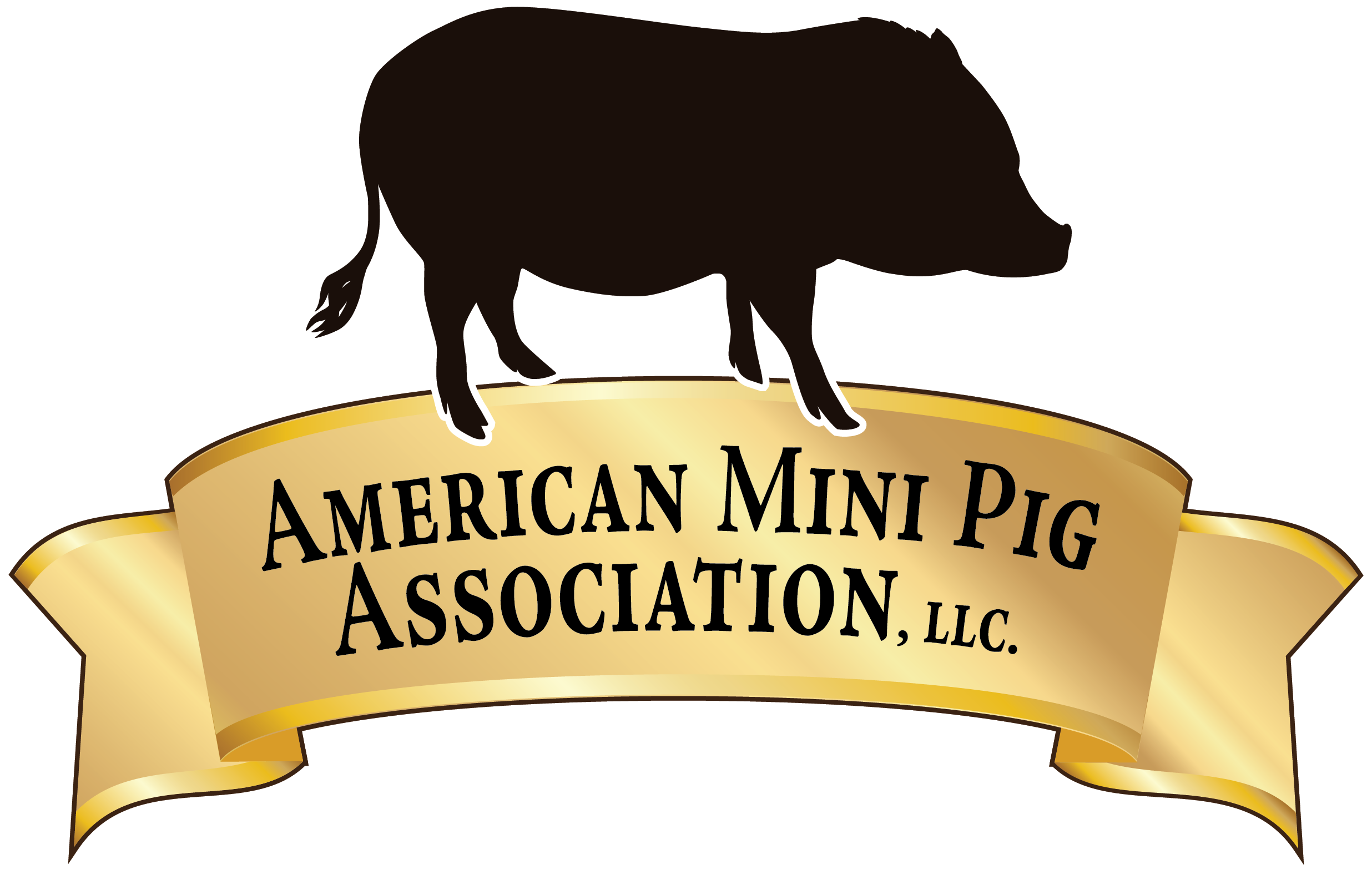Healthy Skin Care
Dr. Cathy Zolicani
Healthy skin and hooves depend on a healthy environment, proper skin care, and proper diet. Pigs have a naturally dry skin,very few sweat glands, coats that will blow causing them to go bald overnight, and productive oil glands and scent glands. Diet is probably the most important factor in keeping skin healthy. Some pigs need supplements in order to develop a healthy skin and hooves.
It will take 6 – 8 weeks of care to see improvement in the skin and hooves.
Diet
1. Vitamin D3
Healthy pigs will get enough vitamin D3 if they have 15 minutes of sunlight per day. Sunlight filtered through window glass will not provide the correct wavelengths of light to allow the pig’s body to produce vitamin D. Healthy thickened skin (a condition called lichenification) will not absorb and utilize sunlight correctly, so oral supplementation is required. Vitamin D3 capsules (1000 – 2000iu) can be given once a day for 2 weeks , then once weekly. All indoor pigs should have vitamin D supplementation. A full spectrum light, marketed for people with Seasonal Affective Disorder (SAD) can be used for 15 minutes per day if you would prefer to avoid supplements AND if you pig already has healthy skin.
2. B-Vitamins
B-Vitamins (especially biotin), trace vitamins and trace minerals – here are 30 or so trace vitamins and minerals that are necessary for healthy skin. B vitamins, especially biotin, are also very important. Fortunately, there are several horse products that have been formulated for healthy skin and hooves that work very well for pigs. They are formulated in a pelleted feed form and can be obtained at the local feed store. Farnam’s horseshoer’s secret is an excellent product for this, but there are several that would work. 1 teaspoonful per day for 2 weeks, then once a week for a long time.
3. Dietary Fat
Dietary fat is necessary to provide healthy oils, hair, hooves. It is also needed for the pig to absorb vitamins and minerals from the digestive tract. Animal fat (also called lard) works best for this. Lard can be purchased at the grocery store or at Walmart. Divide the lard into small batches and freeze the rest to prevent it from becoming rancid. (I put mine into ice cube trays for easy feeding). 1 tablespoon daily for 1 week, then 1 tablespoon once a week for maintenance. It can take a few weeks to notice the difference
Coconut oil can also be used, but if your pig is having severe skin issues, animal fat is a better choice. 1 tablespoon per 25 lbs daily.
4. Vitamin C
Vitamin C is needed for healthy metabolism and absorption of other vitamins and minerals. Vitamin C, 500 mg once a day for 2 weeks, then once a week.
5. Vitamin E
Vitamin E 400 iu once a day for all pigs – helps with the balance of selenium and magnesium in the body.
6. Healthy Foods
A diet with lots of fresh greens, limited fruits, and a balanced pelleted or homemade diet is essential.
7. Supplements
A selenium/vit e/magnesium product is also a good idea, especially in areas of the country where the soil is poor in selenium (like the pacific northwest). A horse feed-through product works very well, 1 teaspoonful once a week. Available at the feed store.
Environment
Pigs will root and scratch on anything and everything. We must make sure that they have a safe environment – no wires, glass, poisonous plants and that sort of thing. In addition, they must be provided with shade (sunburn is very common in pigs),water and mud (to help keep bugs, stickers, and sun away, and to help them stay cool), and graze for rooting and eating.
Sunburn is very common in pigs. Some plants, medications and illnesses will cause photosensitivity, which will cause the sunburn to be much worse, or will cause a pig to burn even in the shade. If your pig is on medication (other than the dietary supplements, and de-wormers), keep it inside until it has been off of the medication for 2 weeks. If your pig is sick, keep inside until it feels better. Sunscreen is useful in preventing sunburn. Use a children’s sunscreen with the highest spf that you can find – and apply it frequently (every 30 minutes is recommended). Make sure that your pig has shade and mud to roll in – this is a great natural sunscreen. Or – only allow your pig outside for a limited amount of time early in the morning, or at twilight.
Skin Care
1. Bathing
House pigs need to be bathed and most love it. It is important to use a gentle soap and to rinse completely. Do not overbathe—it can strip the natural oils out of the skin and cause dryness. Brushing and forking is always good.
2. Oils
There are several good quality moisturizers that can be used to soften a pigs skin. Try some on a small area of skin first to make sure that there is no allergic reaction. Coconut oil can be used as a skin lotion.
3. Hoof Oil
There are several good quality horse hoof moisturizers/oils that can be used to moisturize the hooves. These can be found at most feed stores. Coconut oil can also be used.
Visit our website to learn more about mini pigs, find a registered mini pig breeder, become a member of the AMPA and register your mini pig in the official mini pig registry!
www.AmericanMiniPigAssociation.com

